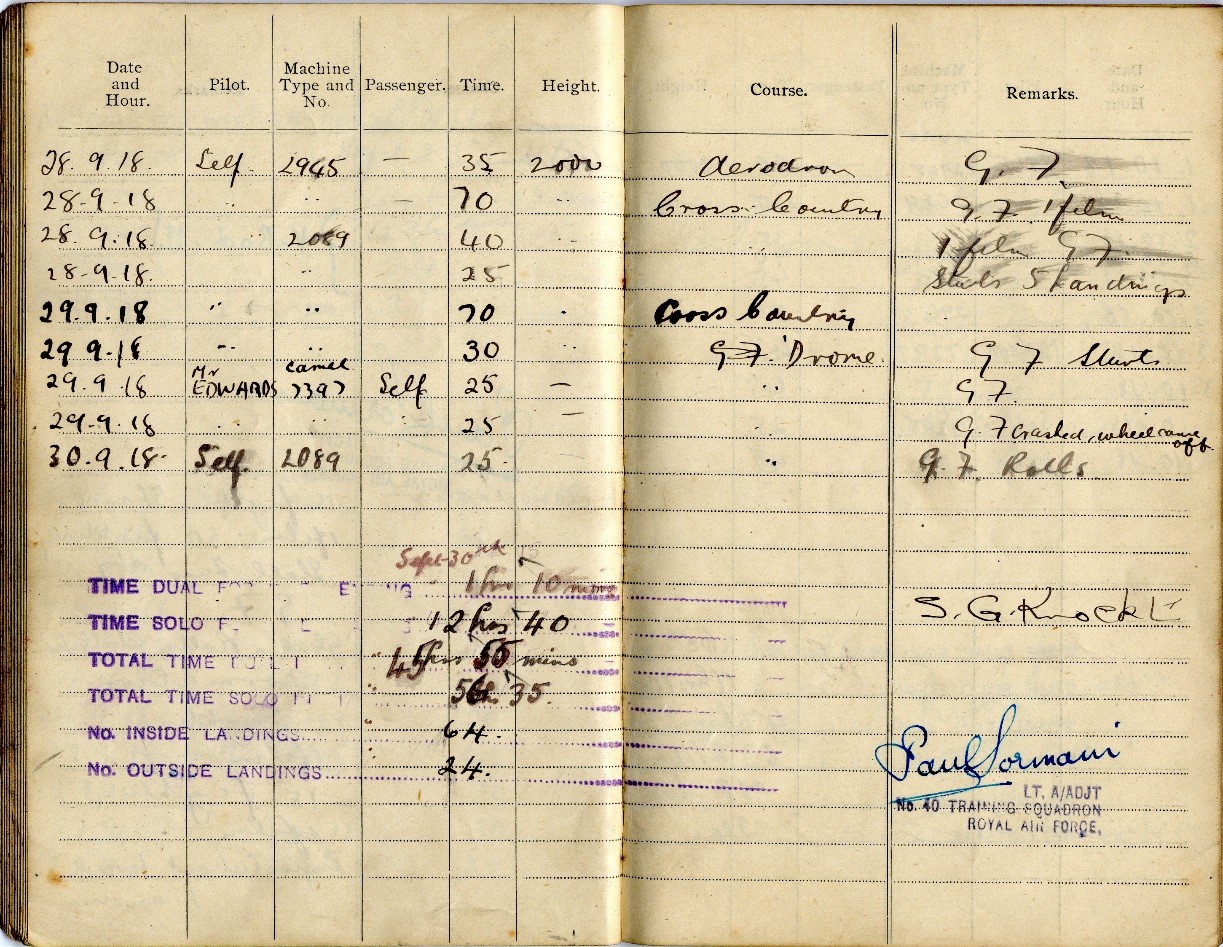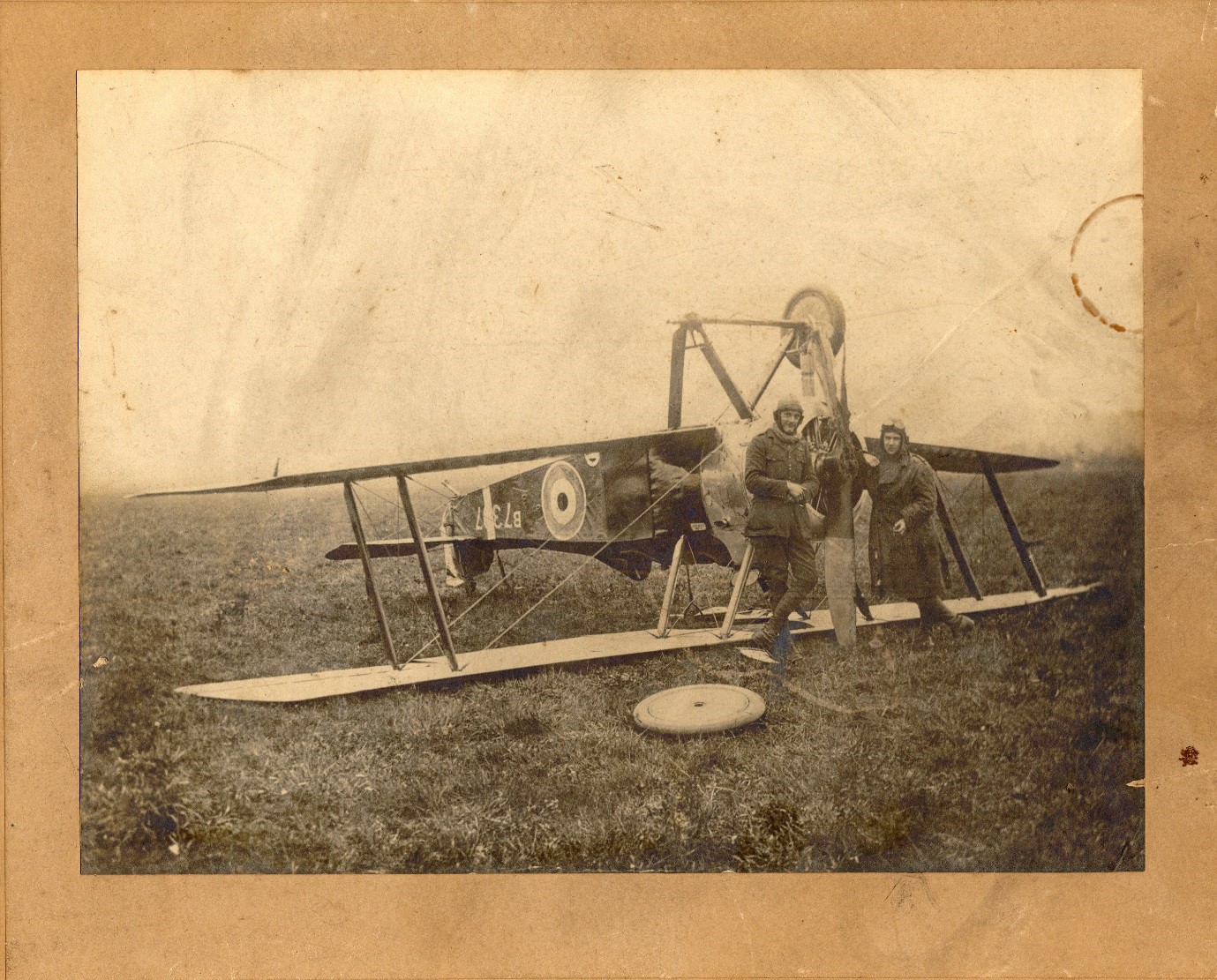As part of my work here at the Science and Industry Museum, I am currently editing records to prepare them for upload to the museum’s online catalogue. During my editing work, I came across this lovely little collection on the training exploits of a pilot in the early days of the Royal Air Force.
His pilot’s flying log book, donated to us by his family in 1997, tells us all about his training experiences, including a particularly dangerous flight in September 1918 and what his mother thought of his exploits.

Science Museum Group © The Board of Trustees of the Science Museum
Fred Kay joined the Royal Flying Corps, later to become the Royal Air Force, in late 1917 or early 1918. His first training flight took place at the Grahame-White Training School based at Hendon Aerodrome in London on 6 May 1918 at 11.45 in the morning. His early flights were just flying around the aerodrome in a civilian aircraft, doing what are known as circuits. He continued to fly circuits for nearly 8 hours over the course of a month.
His first solo flight was on 8 June 1918, when he flew for an hour in the morning and another hour later in the day. With a grand total of 17 hours and 10 minutes flying time, he moved on to train in a military aeroplane and began his military flying career proper 19 June 1918 with No. 40 Training Squadron.
He learned a variety of flying manoeuvres over the course of the next 3 months, including how to turn, roll, fly in formation, flying in cloud, landing (always useful) and later flying across country. Eventually his total hours of controlling the aircraft began to increase from 2 hours a week to 3 but always with an instructor on board. He eventually flew solo for the whole week without an instructor between 22 and 26 August 1918, clocking up 4 hours and 35 minutes.

Science Museum Group © The Board of Trustees of the Science Museum
His confidence must have grown as his flying improved. By September he was flying more often as a solo pilot, clocking in 45 hours and 55 minutes with an instructor versus 56 hours and 35 minutes on his own. He flew a Manchester-built AVRO 504 aircraft, which had originally been designed for combat but, because of the pace of development, soon became obsolete as a fighter and was used as a training aircraft by the RAF until the early 1930s. He flew a variety of manoeuvres as well as cross country, learnt to film from the air and how to dogfight in aerial battles, and he was still only 19 years of age.
As with all procedures that involved flight, especially flying aeroplanes made of wood, canvas and wire, there were dangers. Fred Kay had been lucky and the worst thing that had happened to him so far was his engine cutting out. However, on 29 September 1918, just short of his 20th birthday, Fred Kay and a flying instructor by the name of Mr Edwards got into a bit of bother.

Science Museum Group © The Board of Trustees of the Science Museum
From the log book we can see that Fred was taking his first flight in a more powerful aircraft, the Sopwith 1F1 Camel dual control trainer. As they were about to land, they crashed and the aeroplane overturned. You can see from the entry in his flight log, he wrote the comment ‘wheel came off’. I think that Fred Kay must have counted himself a very lucky that day—so lucky in fact that Fred and his instructor had their photo taken next to the crash.

Science Museum Group © The Board of Trustees of the Science Museum
The following day he got back into the skies, eventually flying the same aircraft he had crashed in (once they had put the wheel back on) and continued to train. Later in October, he learnt how to use the onboard machine guns. He continued flying training, which he completed at No.2 Fighting School, and the last recorded flight he made was on 9 February 1919.
From brief biographical details that accompanied the donation and recollections from his son, we learnt that Fred’s mother was not happy at the thought of him continuing his career in the Royal Air Force, even though he had his heart set on it. She eventually paid for him to leave and afterwards he tried starting a business with a friend, where he was not so lucky, as it failed.
In 1924 he married and joined the family firm, managing advertising space on billboards in the Northampton area. Perhaps not as exciting as taking to the air in magnificent flying machines, but perhaps more than a little safer (and better for his mother’s nerves).